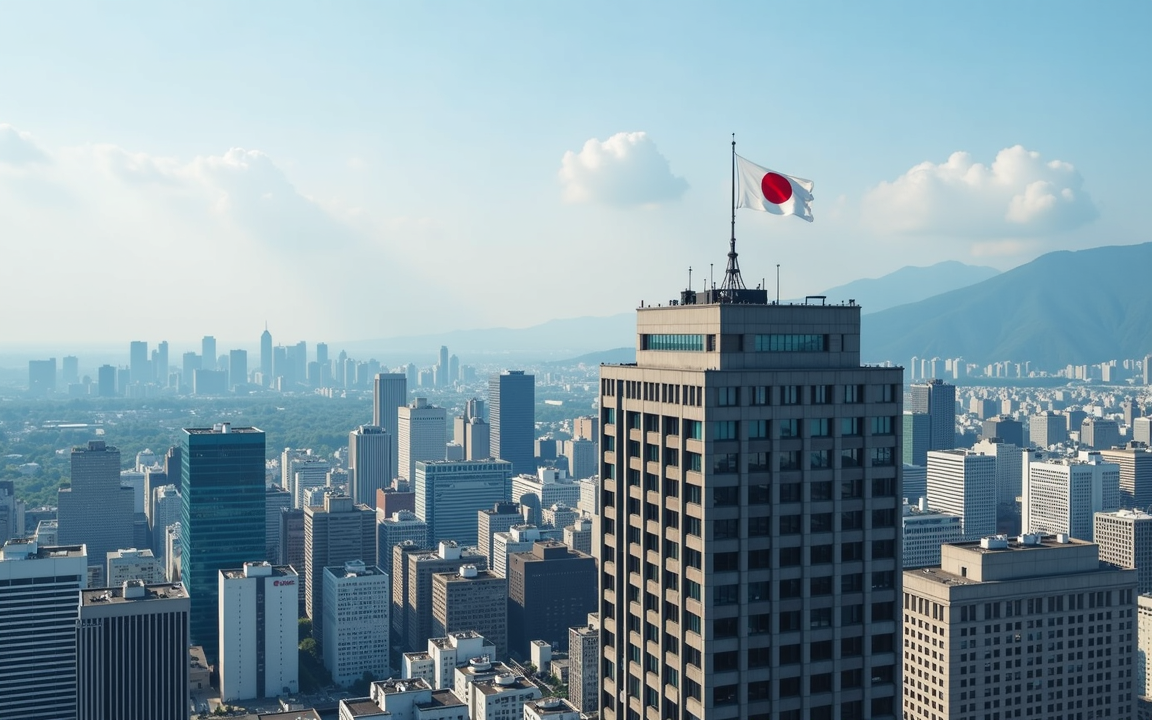
The bruising electoral defeat suffered by Japanese Prime Minister Shigeru Ishiba’s ruling coalition has plunged the country into a state of political uncertainty, creating a significant new dilemma for the Bank of Japan (BOJ).
The central bank now finds itself in a double bind, facing the prospect of increased government spending that could fuel already elevated inflation, while at the same time confronting compelling reasons—including potential political paralysis and a looming global trade war—to go slow on any future interest rate hikes.
The rising cost of living was a key factor contributing to the ruling coalition’s defeat in the upper house elections on Sunday.
With inflation having remained above the Bank of Japan’s 2% target for over three years, the political pressure to address this issue is immense.
Prime Minister Ishiba, now heading a minority government in both chambers of parliament, must compromise with opposition parties to pass any legislation. These opposition parties have largely campaigned on a platform of tax cuts and bigger spending packages to help households cope with the high cost of living.
In a nod to these new political realities, Ishiba announced on Monday that he would stay on as prime minister and work with other parties on measures designed to cushion the blow to households from rising inflation.
While a cut to the national consumption tax would leave a huge hole in Japan’s already worsening finances and would take considerable time to pass through parliament, a more likely scenario is that Japan will compile an extra budget in the autumn to fund payouts and tax breaks.
Analysts suggest that the size of this package could exceed last year’s 14-trillion-yen ($95 billion) stimulus, given the heightened demands from the opposition for bolder action.
“A supplemental budget this fall to help firms cope with US tariffs was expected even before the vote. Now, opposition parties may demand a larger package,” commented David Boling, a director at the consulting firm Eurasia Group.
The inflation dilemma: mounting pressures and a cautious BOJ
This prospect of a significant fiscal stimulus comes at a time when some BOJ board members have already been warning of growing price pressures. Board member Junko Koeda recently argued for the need to monitor the “second-round effects” from rising rice costs.
Another board member, Hajime Takata, said this month that the BOJ must resume its rate hikes after a temporary pause, as Japan was on the cusp of durably achieving the bank’s 2% inflation target.
Hawkish policymaker Naoki Tamura went even further late last month, stating, “If upward inflation risks heighten, the BOJ may need to act decisively as a guardian of price stability.”
“If you look at the core core [inflation], it accelerated. That strong result will make it more likely for the BOJ to raise its inflation outlook later this month,” said Toru Suehiro, chief economist at Daiwa Securities, referring to the latest inflation data.
However, the Bank of Japan is also contending with significant economic headwinds. The Japanese economy shrank in the first quarter and is expected to take a hit from US tariffs, which are already hurting its vital automobile sector.
This may necessitate the very fiscal boost that could also fuel inflation. After raising short-term interest rates to 0.5% in January, BOJ Governor Kazuo Ueda has signaled a pause in further rate hikes until there is more clarity on the economic impact of these US tariffs.
Given this risk, many analysts now expect no further rate hikes for the rest of this year.
This is despite the fact that BOJ staff estimates suggest its policy rate must rise to at least 1% to reach a “neutral” level that neither stimulates nor cools economic growth.
The yen’s pivotal role: a potential trigger for action
Lingering political uncertainty following the election may also weaken the Japanese yen, which could push up the cost of imports and add to the mounting price pressures, some analysts say.
This would directly conflict with the BOJ’s current view that cost-push inflationary pressure will ease later this year.
“With Ishiba signaling his resolve to stay on as premier, markets are now in a wait-and-see mood. But that doesn’t mean the chance of yen declines has disappeared, as the election definitely weakened administration’s standings,” said Tsuyoshi Ueno, an economist at NLI Research Institute.
Ultimately, a renewed decline in the yen could be the decisive nudge that forces the BOJ’s hand, some analysts believe. Although the BOJ is legally guaranteed independence from government interference, it has historically been sensitive to political developments.
Its massive stimulus program in 2013 was deployed after intense pressure from then-Prime Minister Shinzo Abe to combat a strong yen and beat deflation.
Similarly, its exit from ultra-loose policy last year came after a flurry of calls from politicians to help stem sharp yen falls that were pushing up import costs.
“For the BOJ, the biggest concern is how the election could change the government’s focus on economic policy, and how markets could react,” said a source familiar with the central bank’s thinking.
Veteran BOJ watcher Mari Iwashita, now an executive rates strategist at Nomura Securities, sees a chance of a rate hike in October if the yen, currently around 147 to the US dollar, falls below the 150 mark and puts further upward pressure on prices.
“Sustained yen weakness would push up underlying inflation, so could be a key trigger for policy action,” Iwashita said.
The post Why Japan’s currency could be the unlikely trigger for BOJ’s next big move appeared first on Invezz

